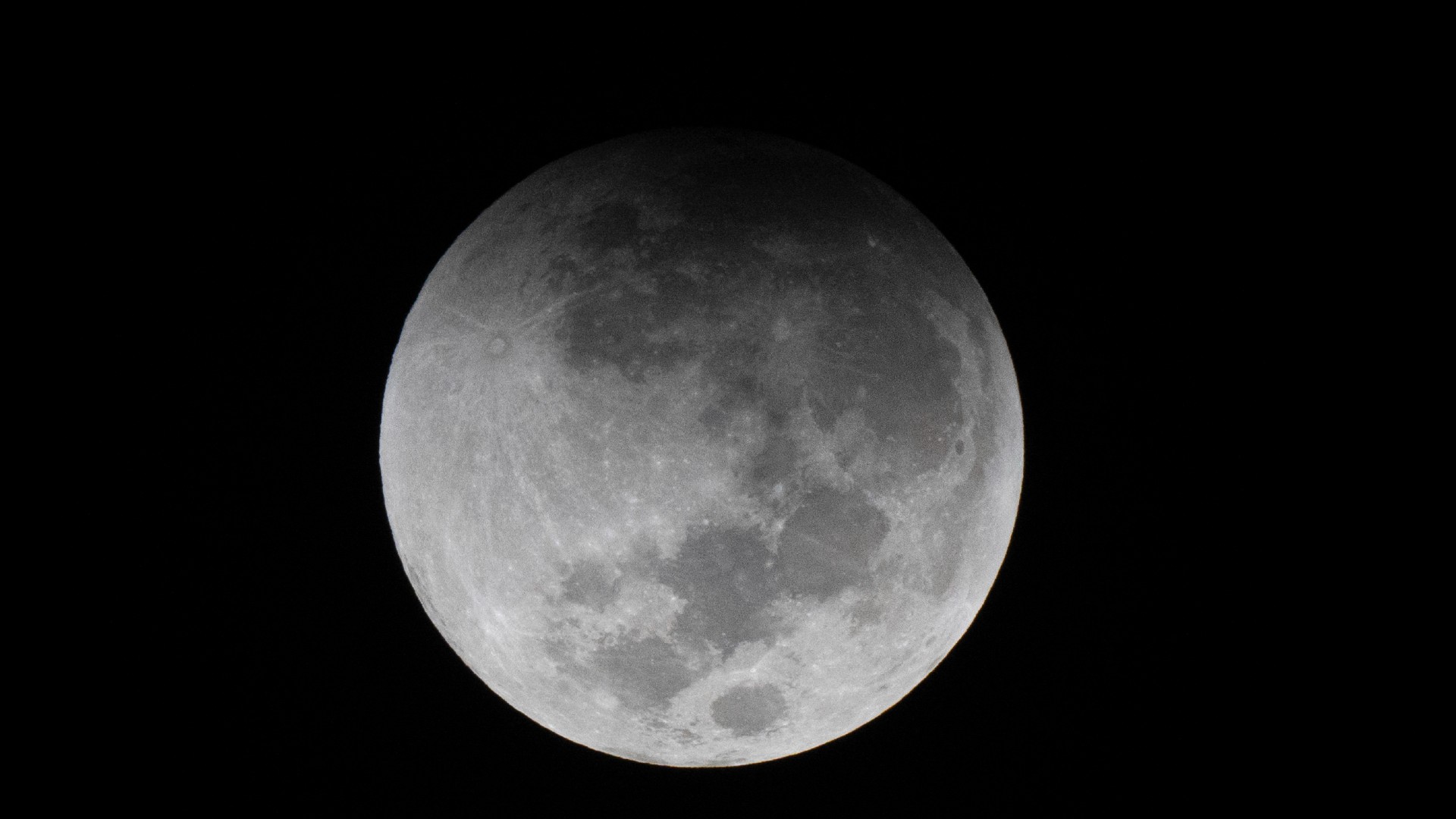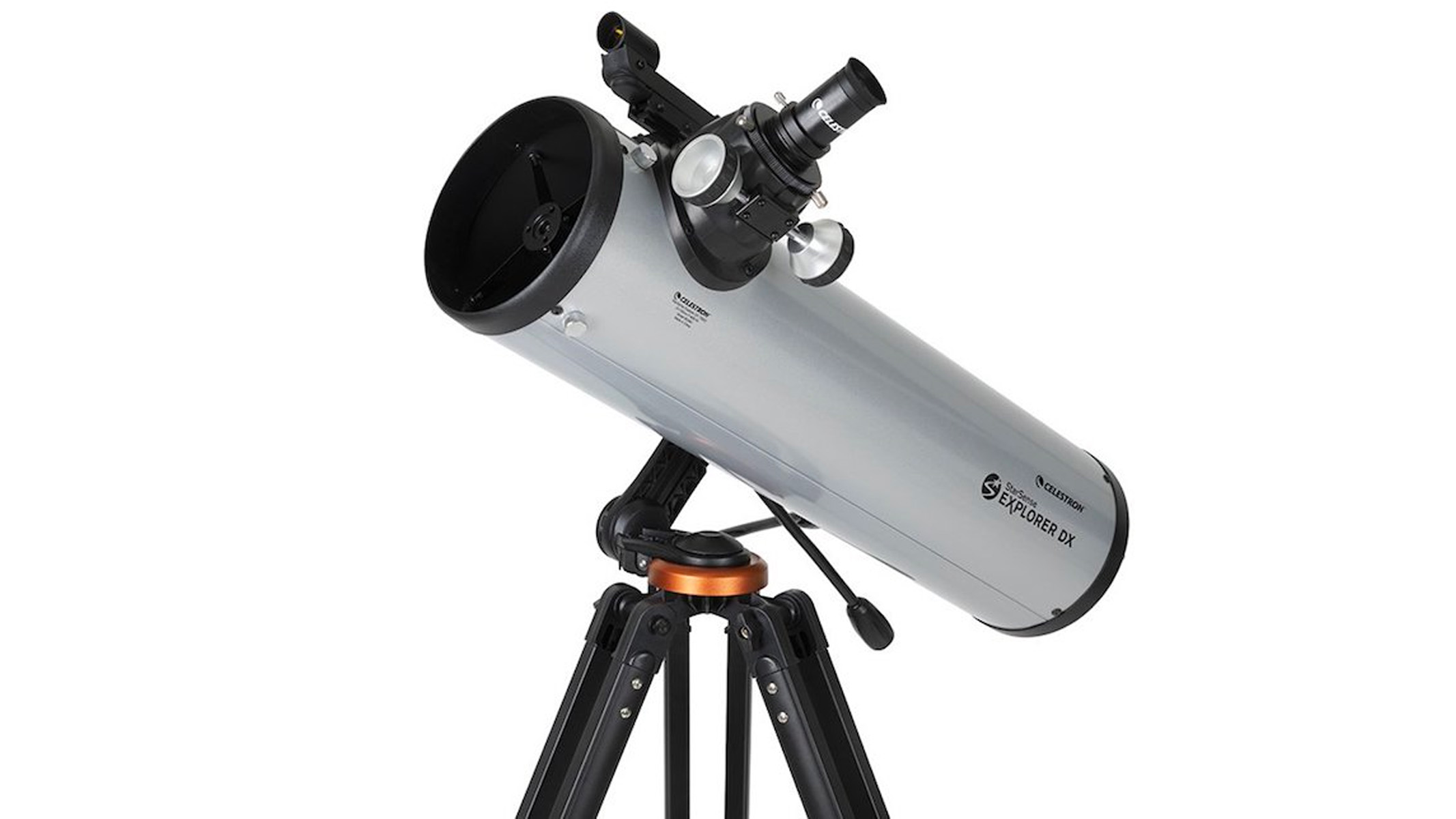
The moon will be full on Tuesday, Sept. 17: The Harvest Full Moon.
The Harvest Moon isn't exclusively a September event because the full moon occurring closest to the autumnal equinox gets hung with this moniker. Every few years, October (rather than September) hosts this moon that once was critical to farmers. Before electricity and tractors with lights were used to harvest crops all night long, farmers relied on the Harvest Moon's light to extend workdays when fields were most bountiful.
This upcoming full moon will also be the last one prior to an annular (ring) eclipse of the sun on October 2. And this full moon will also experience — however slight — a lunar eclipse, which can be thought of as the preliminary to the main event a fortnight later.
Start of eclipse season

Looking for a telescope for the moon? We recommend the Celestron StarSense Explorer DX 130AZ as the best for basic astronomy in our best beginner's telescope guide.
Both eclipses are, of course, related. A solar eclipse can occur only when the moon is at a node of its orbit. (The nodes are the two points where the moon's path on the sky crosses the sun's path, the ecliptic). During the solar eclipse, the moon will be crossing the ecliptic from north to south. But a half orbit earlier, at full moon, it will cross the opposite node from south to north, encountering the Earth's shadow along the way.
All this is a fine example of how an "eclipse season" works. An eclipse season is when the sun (from our perspective here on Earth) is close enough to one of the moon's nodes to allow for an eclipse to occur. During the season, which lasts a little more than a month, whenever there is a full moon, a lunar eclipse will occur and whenever there is a new moon a solar eclipse will occur.
This will be almost like the lunar eclipse that occurred last March, though the moon passes not quite so wide of the center of the Earth's shadow and manages to give the Earth's dark umbra a glancing blow. The umbra, in fact, penetrates at most into only about 1/12 of the moon's diameter. In contrast with the vague gray penumbra, the umbra is much darker and quite sharp-rimmed.
Region of visibility
The region of visibility for this lunar eclipse covers much of North America (except Alaska and Hawaii), and all of South America (where as seen from Sao Luis, Brazil, the moon will be directly overhead at maximum eclipse). For those situated along and near the Pacific coasts of Washington, Oregon and northern California, the moon will rise on the evening of Sept. 17, already in partial eclipse.
Get the Space.com Newsletter
Breaking space news, the latest updates on rocket launches, skywatching events and more!
Conversely, for much of Europe and Africa, the moon will be descending the western sky during the early morning hours of Sept. 18, setting with the last vestige of the umbra still visible on the moon's western limb for Finland, Ukraine, Turkey, Syria, Saudi Arabia, Ethiopia and Kenya.
Only a slight eclipse
At maximum eclipse (Sept. 18, 2:44 UTC) umbral penetration will be equal to only 8.7%, meaning that only the moon's uppermost limb will be submerged in the Earth's dark umbral shadow. For those who are in a position to view this eclipse, probably the most interesting thing to watch with binoculars or a telescope is when the umbra grazes the northern edge of the dark, lava-filled lunar impact crater Plato around the time of greatest eclipse.
Entry into or exit from the penumbra is not visible. About 70% of the moon's diameter must penetrate into the faint penumbra for it to become evident to most as a slight shading or smudginess, roughly a half hour before first contact with the umbra (moon's upper left portion) and roughly a half hour after last contact with the umbra (moon's upper right portion).
With or without a telescope, the smooth curve of the dark umbra on the lunar disk will be a nice reminder to us, as it was a divine revelation to the ancient Greeks, that our Earth is round.
Below is a timetable for the eclipse. Dashes indicate that the particular event is not visible because the moon is below the horizon. An asterisk indicates that the calendar date is Sept. 18.
| Event | EDT | CDT | MDT | PDT |
|---|---|---|---|---|
| Moon enters Penumbra | 8:40 p.m. | 7:40 p.m. | — | — |
| Shading appears | 9:44 p.m. | 8:44 p.m. | 7:44 p.m. | — |
| Moon enters Umbra | 10:12 p.m. | 9:12 p.m. | 8:12 p.m. | — |
| Greatest Eclipse | 10:44 p.m. | 9:44 p.m. | 8:44 p.m. | 7:44 p.m. |
| Moon leaves Umbra | 11:16 p.m. | 10:16 p.m. | 9:16 p.m. | 8:16 p.m. |
| Shading disappears | 11:43 p.m. | 10:43 p.m. | 9:43 p.m. | 8:43 p.m. |
| Moon leaves Penumbra | 12:47 a.m.* | 11:47 p.m. | 10:47 p.m. | 9:47 p.m. |
Coming attractions
In 2025 the moon will undergo two total eclipses. The first one will favor North America and will be visible during the overnight hours of March 13-14. Totality will last 65 minutes. A second total eclipse will take place on Sept. 7, but there will be no visibility from the Americas. That late-summer event will be played out in the night skies over Europe, Africa and Asia, with the total phase lasting 82 minutes.
The moon looks incredible through a telescope or binoculars. If you want to get a closer look at the moon's many features during lunar eclipses or at any other time, be sure to read our guides to the best telescopes and best binoculars.
And if you want to take your own photos of the moon, we have tips for how to photograph the moon, as well as guides to the best cameras for astrophotography and best lenses for astrophotography.
Be sure not to miss our night sky tonight page and monthly skywatching calendar for more celestial events to take in!
Joe Rao serves as an instructor and guest lecturer at New York's Hayden Planetarium. He writes about astronomy for Natural History magazine, the Farmers' Almanac and other publications.
Editor's note: If you get a great picture of the moon during September's partial lunar eclipse, and would like to share it with Space.com's readers, send your photo(s), comments, and your name and location to spacephotos@space.com.
Join our Space Forums to keep talking space on the latest missions, night sky and more! And if you have a news tip, correction or comment, let us know at: community@space.com.

Joe Rao is Space.com's skywatching columnist, as well as a veteran meteorologist and eclipse chaser who also serves as an instructor and guest lecturer at New York's Hayden Planetarium. He writes about astronomy for Natural History magazine, Sky & Telescope and other publications. Joe is an 8-time Emmy-nominated meteorologist who served the Putnam Valley region of New York for over 21 years. You can find him on Twitter and YouTube tracking lunar and solar eclipses, meteor showers and more. To find out Joe's latest project, visit him on Twitter.









